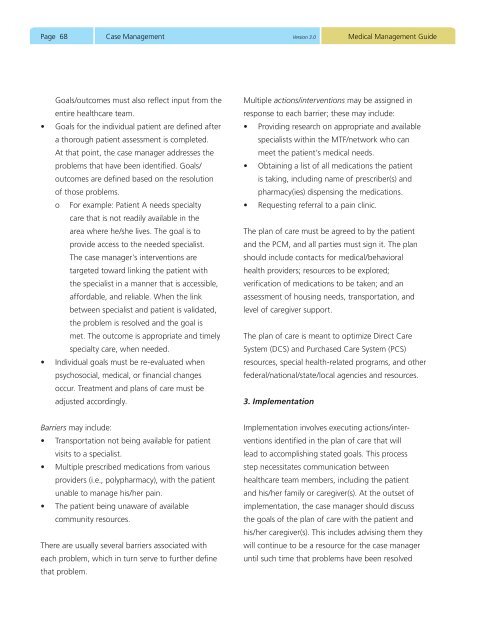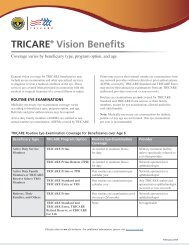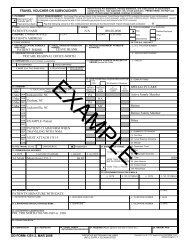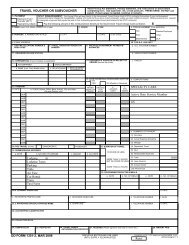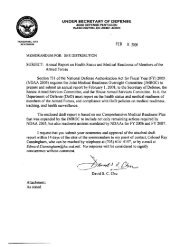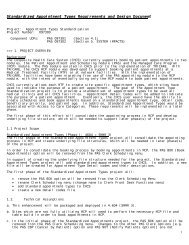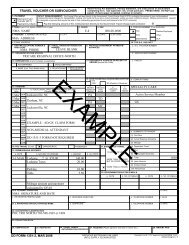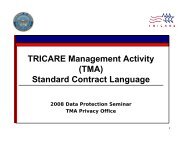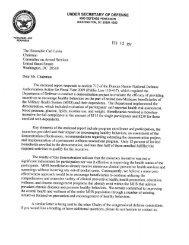Medical Management Guide, 2009, Version 3.0 - Tricare
Medical Management Guide, 2009, Version 3.0 - Tricare
Medical Management Guide, 2009, Version 3.0 - Tricare
- No tags were found...
Create successful ePaper yourself
Turn your PDF publications into a flip-book with our unique Google optimized e-Paper software.
Page 68Case <strong>Management</strong> <strong>Version</strong> <strong>3.0</strong><strong>Medical</strong> <strong>Management</strong> <strong>Guide</strong>Goals/outcomes must also reflect input from theentire healthcare team.• Goals for the individual patient are defined aftera thorough patient assessment is completed.At that point, the case manager addresses theproblems that have been identified. Goals/outcomes are defined based on the resolutionof those problems.o For example: Patient A needs specialtycare that is not readily available in thearea where he/she lives. The goal is toprovide access to the needed specialist.The case manager's interventions aretargeted toward linking the patient withthe specialist in a manner that is accessible,affordable, and reliable. When the linkbetween specialist and patient is validated,the problem is resolved and the goal ismet. The outcome is appropriate and timelyspecialty care, when needed.• Individual goals must be re-evaluated whenpsychosocial, medical, or financial changesoccur. Treatment and plans of care must beadjusted accordingly.Multiple actions/interventions may be assigned inresponse to each barrier; these may include:• Providing research on appropriate and availablespecialists within the MTF/network who canmeet the patient’s medical needs.• Obtaining a list of all medications the patientis taking, including name of prescriber(s) andpharmacy(ies) dispensing the medications.• Requesting referral to a pain clinic.The plan of care must be agreed to by the patientand the PCM, and all parties must sign it. The planshould include contacts for medical/behavioralhealth providers; resources to be explored;verification of medications to be taken; and anassessment of housing needs, transportation, andlevel of caregiver support.The plan of care is meant to optimize Direct CareSystem (DCS) and Purchased Care System (PCS)resources, special health-related programs, and otherfederal/national/state/local agencies and resources.3. ImplementationBarriers may include:• Transportation not being available for patientvisits to a specialist.• Multiple prescribed medications from variousproviders (i.e., polypharmacy), with the patientunable to manage his/her pain.• The patient being unaware of availablecommunity resources.There are usually several barriers associated witheach problem, which in turn serve to further definethat problem.Implementation involves executing actions/interventionsidentified in the plan of care that willlead to accomplishing stated goals. This processstep necessitates communication betweenhealthcare team members, including the patientand his/her family or caregiver(s). At the outset ofimplementation, the case manager should discussthe goals of the plan of care with the patient andhis/her caregiver(s). This includes advising them theywill continue to be a resource for the case manageruntil such time that problems have been resolved


